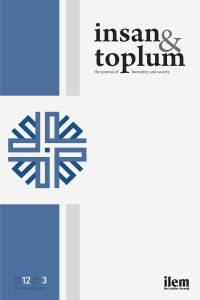The Construction of Strategic Narrative in the Saudi-Iranian Regional Rivalry: The Case of the Yemeni Civil War
This study discusses strategic narratives of Saudi Arabia and Iran through the example of the Yemeni Civil War (2011-2021). During their regional power struggle, the two countries construct their narratives against each other by means of the media. The strategic narratives of Saudi Arabia and Iran are examined at three levels: issue, identity and system narratives. The research has intended to determine how the media of the two countries define the Yemeni Civil War, the identity references they have made to each other and the type of regional order they have envisioned. An issue-based news survey was conducted a ten-year period by selecting three international media outlets of Iran and Saudi Arabia. The news texts were analyzed by applying the qualitative content analysis technique. . It was observed that by using the strategic narrative as a tool, the two regional rival powers made a great effort to present their attitudes and behavior as legitimate, and the other side as illegitimate in the presence of international public opinion.
Keywords:
Strategic narrative, Saudi Arabia Iran, Yemeni Civil War, regional rivalry.,
___
- Antoniades, A., Miskimmon, A. & O’Loughhlin, B. (2010). Great power politics and strategic narratives, Center for Global Political Economy, Working Paper, (7).
- Ehteshami, A. (2018). Saudi Arabia as a resurgent regional power, The International Spectator, 53(4), 1-21.
- Entman, R.M. (1993). Framing: Toward clarification of the fracture paradigm, Jounal of Communication, 43(4), 51-58.
- Freedman, L. (2006a). Network, culture and narratives, Adelphi Paper, 45(379), 11-26.
- Hallahan, K., Holdzhausen, D., Ruler, B.,Vercic, D. & Sriramerh, K. (2007). Defining strategic communication, International Journal of Strategic Communication, 1(1), 3-35.
- Hiro, D. (2018). Cold War in the Islamic World: Saudi Arabia, Iran and the struggle for supremacy, Hurst.
- Holtzhausen D. & Zerfass, A. (2015). Strategic communication: Opportunities and challenges of the research areas, In Routledge Handbook of Strategic Communication, New York & London: Routledge.
- Jankowski, B. (2013). War narratives in a world of global information age France and the war in Afghanistan, IRSEM Paper, No.8.
- Kılıç, R. K. (2018). Media and narrative in the relationship between war and society: A movie review, Emrah D. & Nuran Ö. (Eds.), Issues in Communication, Media and Public Relations (ss.117-128). London: IJOPEC Peblication.
- Krebs, R. (2015). Narrative and the making of U.S national security. Cambridge University Press.
- Mabon, S. (2017). Saudi Arabia and Iran: power and rivalry in the Middle East. A. B. Tauris.
- Madisson, M. & Ventsel, A. (2021). Strategic conspiracy narrative. Routledge.
- Miskimmon, A., O’Loughlin, B. & Roselle, L. (2013). Strategic narratives: Communication power and the new world order. Routledge.
- Miskimmon, A., O’Loughlin, B. & Roselle, L. (2017). Forging the world: strategic narratives and international relations. Michigan University Press.
- Nissen, T. (2015). The weaponization of social media. Danish Defence.
- Paterson M. & Monroe, R. (1998). Narrative in political science, Annual Review in Political Science, 1, 315-331.
- Ringmose J. & Börgesen, B. (2011). Shaping public attitudes towards the deployment of military power: NATO, Afghanistan and the use of strategic narratives, European Security, 20 (4), 505-528.
- Roselle, L. (2006a). Media and the politics of failure. Palgrave.
- Roselle, L., Miskimmon, A. & O’Loughlin, B. (2014). Strategic narrative: A new means to understand soft power, Media, War and Conflict, 7 (1), 70-84.
- Suganami, H. (1999). Agent, structures, narratives, European Journal of International Relations, 5 (3), 365-386.
- Zaharna, R. (2010). Battles to bridges: U.S strategic communication and public diplomacy after 9/11. Palgrave Macmillan.
- ISSN: 2146-7099
- Başlangıç: 2011
- Yayıncı: İlmi Etüdler Derneği
